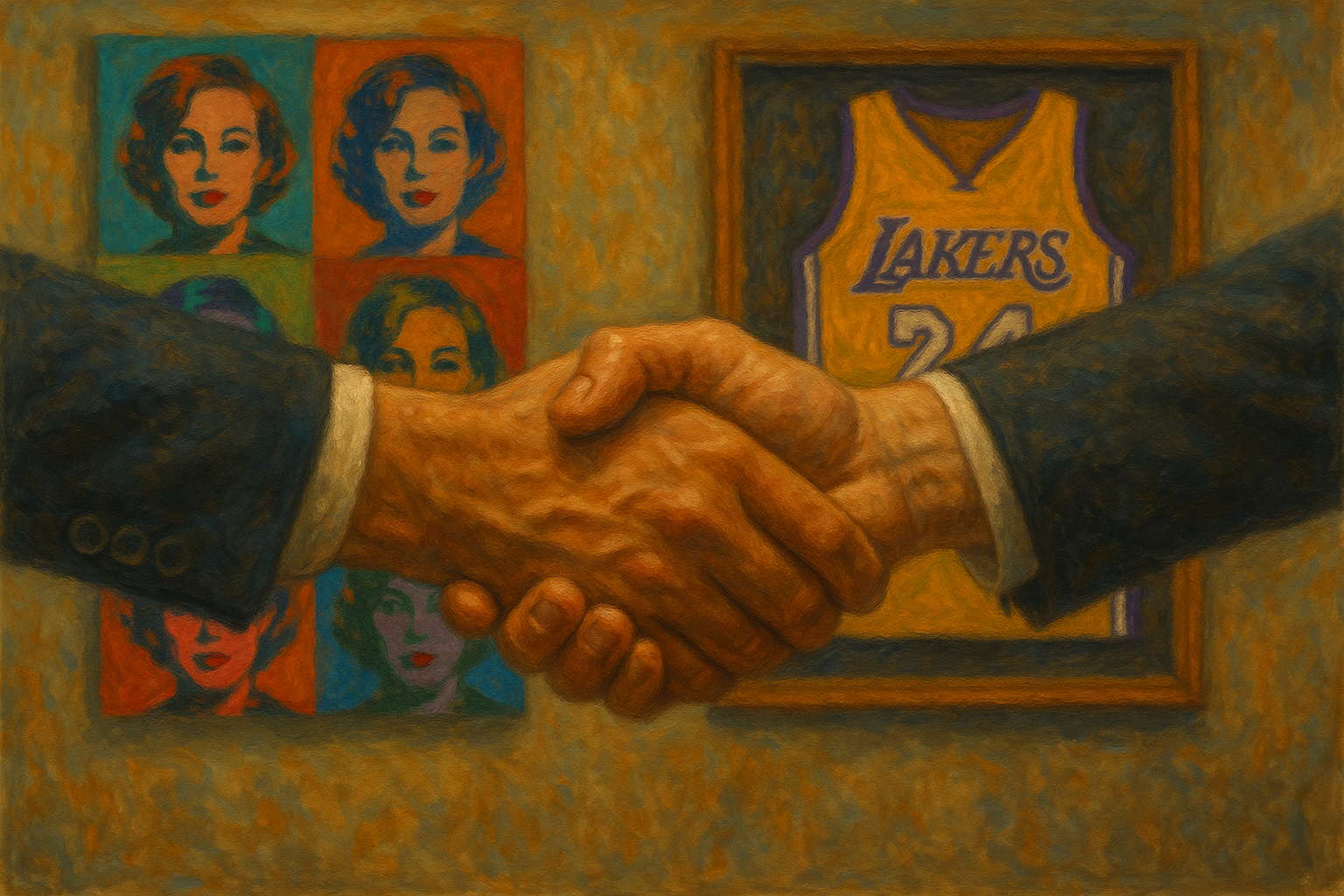Even for seasoned collectors, the auction world can be a complex maze of jargon and terminology, particularly when that terminology varies among auction houses. Still, without a firm understanding of the industry vernacular, bidders and consignors alike could encounter unwelcome surprises, whether in the form of unforeseen fees that push a winning bid 20% higher or sales proceeds that fall well short of their lofty expectations.
To assuage those concerns and reduce the potential for unexpected, unpleasant outcomes, we’ve compiled a glossary of the key auction terms that high-net-worth collectors (and collectors of all sizes and types) should familiarize themselves with.
Auction Economics
Buyer’s Premium:
The fee paid by the winning bidder of an auction lot, typically expressed as a percentage of the hammer price (also known as the winning bid). Though buyer’s premiums vary by auction house, a typical fee would be 20%. While the auction house often receives and keeps the entirety of the buyer’s premium, they will sometimes share a portion of it with the consignor depending on the terms of the consignment agreement.
Selling Commission:
The fee paid by the consignor of an auction lot to the auction house, typically expressed as a percentage of the hammer price (also known as the winning bid). Auction houses and consignors often negotiate these commissions, and auction houses deduct the fee from the proceeds owed to the consignor.
Hammer Price:
The winning bid price for an auction lot before adding buyer’s premium and other fees. The hammer price is typically lower than the sale price, which includes those fees.
Reserve Price:
The price, established by the consignor, below which an item will not sell. For example, a consignor may not be willing to part with their item unless bidding reaches $1,000,000. The consignor can then establish a $1,000,000 reserve price, and if bidding fails to reach that level, the consignor retains the item. Auction houses may disclose that there is an unmet reserve price in place on a lot throughout the auction, a few days before the auction closes, or only at the close of the auction. They will rarely disclose the level of an unmet reserve.
Chandelier Bidding:
A practice through which an auction house submits bids of its own below a reserve price for an auction lot in an effort to elevate the competition closer to the reserve and stimulate additional bidding activity. The house cannot, however, bid at or above the reserve price. In a live auction event, the audience may hear the auctioneer refer to these bids as “here with me” or “in my book.”
Auction Mechanics
Irrevocable Bid:
A bid made by a third party (rather than the auction house) that guarantees the sale of an item. In exchange for eliminating the risk that the lot won’t sell, the third party either receives a fee concession if their bid wins the auction or a portion of the upside if bidding exceeds their irrevocable bid. Auction houses will generally accept irrevocable bids if they harbor any concerns that an item won’t meet its reserve or won’t garner bidding activity. They’ll be less inclined to entertain an IB if they’re confident in frenzied bidding activity for an item.
Guarantee:
A price promised by an auction house to a consignor for their item. To win consignments, entice consignors, and assuage their concerns, auction houses may guarantee a certain price to the consignor either for a single item or their entire collection (in some rare and esteemed cases). If bidding fails to exceed the guaranteed price, the auction house must purchase the work from the consignor at that price, meaning the house has taken significant risk in offering the guarantee.
Underbidder:
The runner-up in bidding competition who placed the second-highest bid behind the winning bidder. Many collectors have regretted being the underbidder on treasured auction lots that got away.
Estimate:
Set by the auction house, estimates can be expressed as a range from low estimate to high estimate (i.e. $100,000 – $200,000), as a single number (i.e. $150,000), or as one low estimate (i.e. $100,000+). In most cases, auction house estimates are the house’s expectation for the winning bid/hammer price, not the sale price with buyer’s premium and other fees included. While that’s the typical practice, both consignors and bidders should confirm the estimate-setting process with their house of choice.
Provenance:
The chain of ownership of a particular item. It’s customary for auction houses to include information on an item’s provenance in fine art auctions, though provenance is important for high-value items across most collectible categories. Auction houses typically present provenance information as a list of all prior owners; for an artwork, as an example, that list would ideally start with the artist or the artist’s gallery and extend through the current consignor. A clear accounting of provenance can enhance a piece’s value, as can the presence of certain esteemed collectors. For instance, provenance to the Paul Allen Collection generated impressive outcomes for several artworks at Christie’s in 2022.
Extended Bidding:
A period of bidding beginning at a predetermined time to conclude an auction, typically one held online. Practices vary by house, but many extended bidding structures will extend the time remaining for a lot each time it receives an additional bid, usually by an increment of two, five, or fifteen minutes. Extended bidding exists to prevent a practice called “bid sniping,” in which a bidder will attempt to bid at the last possible second before an item closes. In extended bidding, such a bid would simply extend the sale for several more minutes. Often, bidders must submit a bid before the start of extended bidding to be eligible to bid in extended bidding.
Auction Performance
Bought-In:
Refers to an auction lot that fails to sell. However, despite the nomenclature, it’s important to note that only those lots that have been guaranteed will actually be “bought” by the auction house upon failure to sell.
Sell-Through Rate:
The number of lots sold in an auction event divided by the number of lots available for sale. An event that achieves a sell-through rate of 100% is called a “white glove event.” Sell-through rates in the 80% and 90% range generally indicate a healthy market, whereas sell-through rates below that level may suggest a market enduring weakness. This is particularly true in an environment where auction houses use tools like guarantees and third-party irrevocable bids to ensure items sell.
Hammer Ratio:
A ratio dividing a lot’s hammer price by its pre-auction low estimate. The hammer ratio measures how well a lot performed relative to expectations. A ratio above 1 would indicate a successful auction, while a ratio below 1 suggests it underperformed. Observers will sometimes analyze the aggregate hammer ratio of an entire auction event as a measure of market health, dividing the sum of all hammer prices by the sum of all low estimates.
Destiny Family Office specializes in helping high-net-worth collectors understand, account for, and protect the financial might of their collections, both for themselves and their families. Here, we discuss the many challenges that heirs of high-net-worth collectors may face upon inheriting a collection.
If you have a valuable collection you’d like to include in your financial, tax and estate planning, contact our Destiny Family Office team today. And don’t forget to self-assess your planning to date by completing our Collectibles Scorecard.




